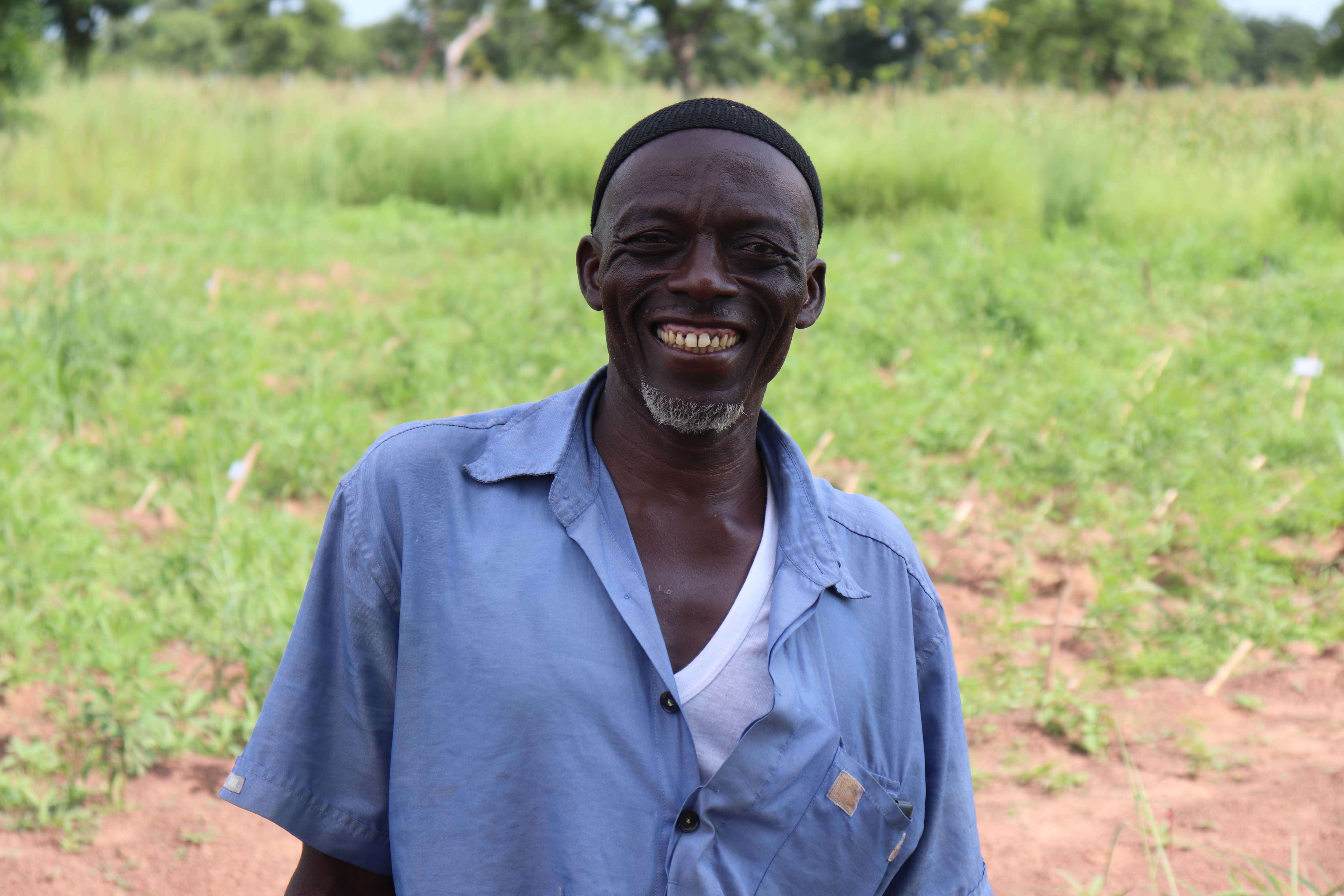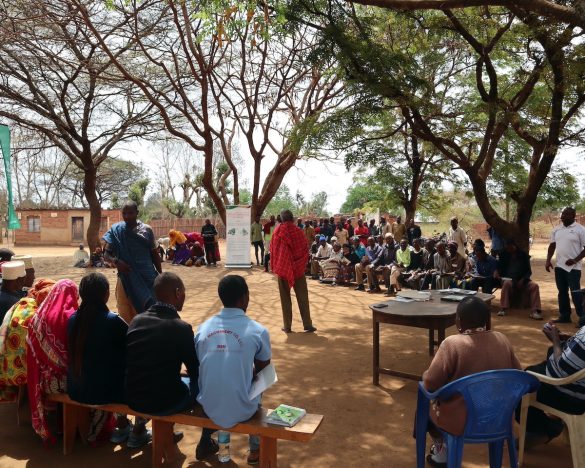Best of both worlds: Intercropping Napier grass with legumes boosts food and livestock productivity in Ghana

Livestock contribute substantially to smallholder farmers’ livelihoods and the sustenance of households in northern Ghana. For many families, farm animals are a risk coping strategy option that acts as a form of insurance against hunger if there is crop failure as a result of climate vagaries.
Nearly all farmers in northern Ghana practice integrated crop-livestock farming and they have a great appreciation and fondness for livestock. Animals are not only a good source of animal protein (meat, milk, and eggs), but are also a source of income because animals or animal products can be sold for cash.
The productivity of livestock in the region has, however, been limited by many factors, key among them feed shortage (quality and quantity) during both the dry and wet seasons. As a result of poor feeding, livestock either die prematurely or are highly undernourished. Further down along the food chain, this malnutrition in livestock also results in poor access to essential animal protein for smallholder farm families. This is in addition to the documented challenges of access to plant protein too, particularly amongst children as shown by an Africa RISING survey, which revealed that an overwhelming majority (90.8%) of children aged 6–23 months in northern Ghana are fed on purely cereal-based non-leguminous foods.
As a result of poor feeding, livestock either die prematurely or are highly undernourished. Further down along the food chain, this malnutrition in livestock also results in poor access to essential animal protein for smallholder farm families. This is in addition to the documented challenges of access to plant protein too, particularly amongst children as shown by an Africa RISING survey, which revealed that an overwhelming majority (90.8%) of children aged 6–23 months in northern Ghana are fed on purely cereal-based non-leguminous foods.
Addressing this multifaceted challenge, therefore, calls for integrated and pragmatic improved agricultural innovations that fit within the daily living means of smallholder farmers in the region.
Through the Africa RISING project, Terry Ansah and his colleagues from the University for Development Studies, Ghana, are working with farmers in rural communities of northern Ghana to validate an innovative cropping system that will help farmers improve the productivity of their livestock (it all starts with the availability of good feed) and also produce more plant protein for family consumption. Understandably, this activity has got farmers excited.
In this innovative intercropping system, farmers are trained to plant both Napier grass (Pennisetum purpureum) and pigeon pea (Cajanus cajan) on the same field plot. The Napier grass serves as fodder for livestock (mostly goats and sheep which predominate the region), while the pigeon pea will serve as food for the family and its residue is used as fodder for the livestock. The unique combination of Napier grass and pigeon pea also provides additional environmental benefits. Research by Africa RISING scientists in Tanzania indicates benefits related to increased soil moisture storage and reduced impact of soil erosion within the farms.

In a predominantly natural pasture-centric system of northern Ghana, livestock lack quality feed in the dry season and in the wet season most rangelands are cultivated with food crops and animals are tethered limiting their access to natural and quality fodder. This sometimes results in livestock feeding on poisonous shrubs leading to morbidity, abortion in pregnant animals and mortality. Livestock are therefore mostly underfed in both the dry and wet season.
Therefore, integrating high yielding fodder with the ability to withstand frequent cutting into food crops in the wet season enables farmers to have feed for their livestock under confinement or tethering.
‘I am very impressed with the farmers’ enthusiasm to readily adopt the technology. I am optimistic that at the end of the intervention, the they will be able to integrate fodder cultivation with any leguminous crop. When the Napier grass or Elephant grass is intercropped with a leguminous crop, the yield is even better than when it is sole Napier grass. The pigeon pea adds nitrogen to the soil enhancing the growth of Napier grass,’ notes Terry Ansah.
At a Farmers’ Field Day event organized by Africa RISING recently (3 October 2019) in Duko Community, Tamale, some farmers praised the benefits of this innovation.
This intervention builds upon previous Africa RISING work with farmers in the same communities. Back in 2014/2016, the project worked with farmers to carry out a comparative yield performance and fodder quality assessment for different Napier grass varieties and out of this work the best varieties were recommended. The project team had also, in 2017, evaluated the prospects of utilizing dual-purpose legumes for livestock production. Africa RISING has also validated other dry-season feed options for smallholder farmers in the region including ensiling groundnut haulms and a formulated feed supplement developed from locally available feed resources.







